Instruction
Stop shanking short shots!

The shank is the most frustrating and embarrassing shots in golf. It can happen to any player of any level at anytime. But the most common shank is the one hit near the green on short chips and pitches.
It is so frustrating to get near the green in regulation, but then walk away with a double bogey — or worse! If you have this shot in your repertoire, a little education might help.
The shank is hit for one simple reason: The hosel (heel) of the golf club hits the ball instead of some part of the face. This can happen a few ways, but here’s the bottom line — you set up aiming the middle of the face at the ball, but end up hitting the hosel. Somehow the club got away from the body and closer to the ball.
The following is a checklist for identifying, understanding and correcting your shank.
- The inside-out shank: When the swing path is too inside-out, the hand line is moving out away from the body and nearer the golf ball. Think of swinging out to right field — your hands have to move away from you to do it. This path is a common cause of a shank. Try moving the golf ball well forward in your stance. If you find that you stop shanking, you’ll know the inside-out path was the problem. With the golf ball farther forward, you will meet the ball later in your arc when the hands are starting to swing IN, or more to the left. If your full swing tends to produce an occasional hook, and you fight a shank on the short shots, this is very likely your problem. Remember when the path is right, the movement is away from you and when the path is left, the movement is more in to you.
- The open-faced shank: This shank is an attempt to open the face when a golfer is coming through the ball. Those players who play with a very strong grip, which causes a shut face, have two very predictable reactions through impact: swinging right (see above) and trying to “hold off” the face. Do both of those and you will fight a shank at times. Try a weaker grip and learn to release the club a bit more. This is a larger issue related to your full swing that you may want to address in general. Often to fully correct a shank, you have to make some changes in your swing. In this case, a weaker grip, more forward ball position and learning to release is the correction.
- The flat-swing shank: Flat swings are prone to shanking as well. When the arms swing around instead of UP on the backswing, the whole club/arms unit gets too far behind you, and the rebound action is too far out in front of you in the downswing. If you have a flat plane on your full swing and suffer from shanks in your short game, you will have to learn to swing the club more up and down.
- The over-the-top shank: Finally, there is the rare shank (often on pitches and green side bunker shots) where an “over the top” move can hit the hosel. I said earlier that an in-to-out path is the likely culprit, and while this is much more common, sometimes I see shanks hit with an upright backswing and an “over the top” downswing. In other words, you can get so far outside you cannot get the club in quickly enough
The shank is the most confounding, feared and embarrassing shots in golf. Remember the hosel is less than an inch from the sweet spot, and it is easier to shank a shot than you think. When this problem plagues your game, I suggest seeing a PGA professional who can quickly and accurately diagnose YOUR particular version of this dreaded malady!
As always, feel free to send a swing video to my Facebook page and I will do my best to give you my feedback.
- LIKE83
- LEGIT9
- WOW2
- LOL2
- IDHT2
- FLOP2
- OB1
- SHANK18
Instruction
The Wedge Guy: The easiest-to-learn golf basic

My golf learning began with this simple fact – if you don’t have a fundamentally sound hold on the golf club, it is practically impossible for your body to execute a fundamentally sound golf swing. I’m still a big believer that the golf swing is much easier to execute if you begin with the proper hold on the club.
As you might imagine, I come into contact with hundreds of golfers of all skill levels. And it is very rare to see a good player with a bad hold on the golf club. There are some exceptions, for sure, but they are very few and very far between, and they typically have beat so many balls with their poor grip that they’ve found a way to work around it.
The reality of biophysics is that the body moves only in certain ways – and the particulars of the way you hold the golf club can totally prevent a sound swing motion that allows the club to release properly through the impact zone. The wonderful thing is that anyone can learn how to put a fundamentally sound hold on the golf club, and you can practice it anywhere your hands are not otherwise engaged, like watching TV or just sitting and relaxing.
Whether you prefer an overlap, interlock or full-finger (not baseball!) grip on the club, the same fundamentals apply. Here are the major grip faults I see most often, in the order of the frequency:
Mis-aligned hands
By this I mean that the palms of the two hands are not parallel to each other. Too many golfers have a weak left hand and strong right, or vice versa. The easiest way to learn how to hold the club with your palms aligned properly is to grip a plain wooden ruler or yardstick. It forces the hands to align properly and shows you how that feels. If you grip and re-grip a yardstick several times, then grip a club, you’ll see that the learning curve is almost immediate.
The position of the grip in the upper/left hand
I also observe many golfers who have the butt of the grip too far into the heel pad of the upper hand (the left hand for right-handed players). It’s amazing how much easier it is to release the club through the ball if even 1/4-1/2″ of the butt is beyond the left heel pad. Try this yourself to see what I mean. Swing the club freely with just your left hand and notice the difference in its release from when you hold it at the end of the grip, versus gripping down even a half inch.
To help you really understand how this works, go to the range and hit shots with your five-iron gripped down a full inch to make the club the same length as your seven-iron. You will probably see an amazing shot shape difference, and likely not see as much distance loss as you would expect.
Too much lower (right) hand on the club
It seems like almost all golfers of 8-10 handicap or higher have the club too far into the palm of the lower hand, because that feels “good” if you are trying to control the path of the clubhead to the ball. But the golf swing is not an effort to hit at the ball – it is a swing of the club. The proper hold on the club has the grip underneath the pad at the base of the fingers. This will likely feel “weak” to you — like you cannot control the club like that. EXACTLY. You should not be trying to control the club with your lower/master hand.
Gripping too tightly
Nearly all golfers hold the club too tightly, which tenses up the forearms and prevents a proper release of the club through impact. In order for the club to move back and through properly, you must feel that the club is controlled by the last three fingers of the upper hand, and the middle two fingers of the lower hand. If you engage your thumbs and forefingers in “holding” the club, the result will almost always be a grip that is too tight. Try this for yourself. Hold the club in your upper hand only, and squeeze firmly with just the last three fingers, with the forefinger and thumb off the club entirely. You have good control, but your forearms are not tense. Then begin to squeeze down with your thumb and forefinger and observe the tensing of the entire forearm. This is the way we are made, so the key to preventing tenseness in the arms is to hold the club very lightly with the “pinchers” — the thumbs and forefingers.
So, those are what I believe are the four fundamentals of a good grip. Anyone can learn them in their home or office very quickly. There is no easier way to improve your ball striking consistency and add distance than giving more attention to the way you hold the golf club.
More from the Wedge Guy
- The Wedge Guy: Golf mastery begins with your wedge game
- The Wedge Guy: Why golf is 20 times harder than brain surgery
- The Wedge Guy: Musings on the golf ball rollback
- LIKE80
- LEGIT13
- WOW4
- LOL1
- IDHT0
- FLOP4
- OB1
- SHANK8
Instruction
Clement: Stop ripping off your swing with this drill!

Not the dreaded headcover under the armpit drill! As if your body is defective and can’t function by itself! Have you seen how incredible the human machine is with all the incredible feats of agility all kinds of athletes are accomplishing? You think your body is so defective (the good Lord is laughing his head off at you) that it needs a headcover tucked under the armpit so you can swing like T-Rex?
- LIKE0
- LEGIT1
- WOW2
- LOL0
- IDHT0
- FLOP0
- OB0
- SHANK2
Instruction
How a towel can fix your golf swing

This is a classic drill that has been used for decades. However, the world of marketed training aids has grown so much during that time that this simple practice has been virtually forgotten. Because why teach people how to play golf using everyday items when you can create and sell a product that reinforces the same thing? Nevertheless, I am here to give you helpful advice without running to the nearest Edwin Watts or adding something to your Amazon cart.
For the “scoring clubs,” having a solid connection between the arms and body during the swing, especially through impact, is paramount to creating long-lasting consistency. And keeping that connection throughout the swing helps rotate the shoulders more to generate more power to help you hit it farther. So, how does this drill work, and what will your game benefit from it? Well, let’s get into it.
Setup
You can use this for basic chip shots up to complete swings. I use this with every club in my bag, up to a 9 or 8-iron. It’s natural to create incrementally more separation between the arms and body as you progress up the set. So doing this with a high iron or a wood is not recommended.
While you set up to hit a ball, simply tuck the towel underneath both armpits. The length of the towel will determine how tight it will be across your chest but don’t make it so loose that it gets in the way of your vision. After both sides are tucked, make some focused swings, keeping both arms firmly connected to the body during the backswing and follow through. (Note: It’s normal to lose connection on your lead arm during your finishing pose.) When you’re ready, put a ball in the way of those swings and get to work.

Get a Better Shoulder Turn
Many of us struggle to have proper shoulder rotation in our golf swing, especially during long layoffs. Making a swing that is all arms and no shoulders is a surefire way to have less control with wedges and less distance with full swings. Notice how I can get in a similar-looking position in both 60° wedge photos. However, one is weak and uncontrollable, while the other is strong and connected. One allows me to use my larger muscles to create my swing, and one doesn’t. The follow-through is another critical point where having a good connection, as well as solid shoulder rotation, is a must. This drill is great for those who tend to have a “chicken wing” form in their lead arm, which happens when it becomes separated from the body through impact.
In full swings, getting your shoulders to rotate in your golf swing is a great way to reinforce proper weight distribution. If your swing is all arms, it’s much harder to get your weight to naturally shift to the inside part of your trail foot in the backswing. Sure, you could make the mistake of “sliding” to get weight on your back foot, but that doesn’t fix the issue. You must turn into your trial leg to generate power. Additionally, look at the difference in separation between my hands and my head in the 8-iron examples. The green picture has more separation and has my hands lower. This will help me lessen my angle of attack and make it easier to hit the inside part of the golf ball, rather than the over-the-top move that the other picture produces.


Stay Better Connected in the Backswing
When you don’t keep everything in your upper body working as one, getting to a good spot at the top of your swing is very hard to do. It would take impeccable timing along with great hand-eye coordination to hit quality shots with any sort of regularity if the arms are working separately from the body.
Notice in the red pictures of both my 60-degree wedge and 8-iron how high my hands are and the fact you can clearly see my shoulder through the gap in my arms. That has happened because the right arm, just above my elbow, has become totally disconnected from my body. That separation causes me to lift my hands as well as lose some of the extension in my left arm. This has been corrected in the green pictures by using this drill to reinforce that connection. It will also make you focus on keeping the lead arm close to your body as well. Because the moment either one loses that relationship, the towel falls.


Conclusion
I have been diligent this year in finding a few drills that target some of the issues that plague my golf game; either by simply forgetting fundamental things or by coming to terms with the faults that have bitten me my whole career. I have found that having a few drills to fall back on to reinforce certain feelings helps me find my game a little easier, and the “towel drill” is most definitely one of them.
- LIKE11
- LEGIT1
- WOW2
- LOL0
- IDHT0
- FLOP2
- OB0
- SHANK8
-

 19th Hole1 week ago
19th Hole1 week agoJohn Daly stuns fans into silence with brutal opening tee shot on PGA Tour Champions
-

 19th Hole1 day ago
19th Hole1 day agoThings got heated at the Houston Open between Tony Finau and Alejandro Tosti. Here’s why
-

 19th Hole2 weeks ago
19th Hole2 weeks ago2-time major champ announces shock retirement from the sport at age of 33
-

 19th Hole1 week ago
19th Hole1 week agoCharlie Woods finds it tough going on American Junior Golf Association debut
-

 19th Hole2 weeks ago
19th Hole2 weeks agoEdoardo Molinari reveals the latest PGA Tour golfer to turn down ‘good offer’ from LIV Golf
-

 Equipment3 weeks ago
Equipment3 weeks agoBest driver 2024: The best driver for you, as recommend by expert club fitters
-

 19th Hole2 weeks ago
19th Hole2 weeks agoScottie Scheffler had an interesting response when asked how he ‘quiets the noise’ following Players victory
-

 19th Hole2 weeks ago
19th Hole2 weeks agoJon Rahm dealt fresh blow to hopes of qualifying for 2025 Ryder Cup

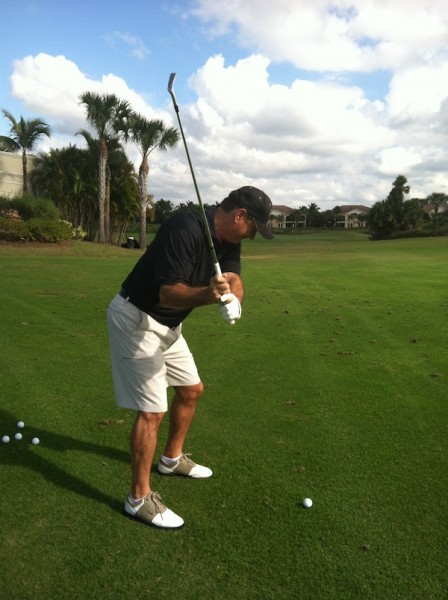











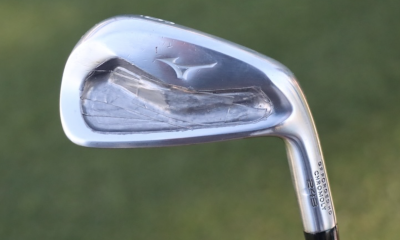

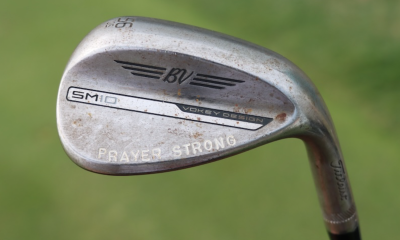

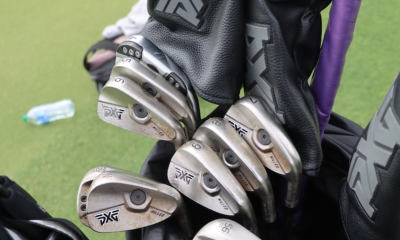

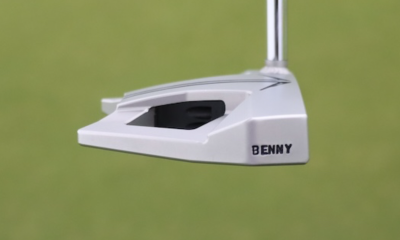

Old Man Emu
Jun 10, 2016 at 3:40 am
I got a bad case of the Sh***s in the late 90’s and actually stopped playing the game. A little more leisure time in the last 3 years I have returned to golf and really love it. I still go through periods, like an hour or so every now and then that I will hit shank after shank with anything from 6 iron through 65 degree.
I find the cure for me is to focus on keeping from falling into the shot and my swing thought is “keep your weight in your backside – weight in bum”.
Don’t they make clubs where the hosel is behind the face ?!
Harry Ruyle
Apr 29, 2016 at 12:54 pm
Dennis is right on in helping cure the shanks in chipping. I’ve read numerous articles on this subject but his is one that works best. I might add that when the club head gets to the ball the club head path had better be square down the line and move left of path line immediately after impact. His article explains this best.
Hugo Mader
Jun 13, 2015 at 9:33 am
Great article! Curiously, I shank only when hitting ball after ball in the practice range, never when playing. Then, I sometimes hit 3 or 4 in succession. It has to do with eyesight also, hasn’t? I have noticed I’m more prone to shanking when there are sudden variations of light, when its getting darker, when you are hitting from a lighter portion of the range to a darker one, or conversely (I use glasses). Harvey Pennick, if I rtemeber well, says something to that effect.
Would you recommend some drill to facilitate the transition to a little more up and down swing? I’m a hdcp 7 flatter swing. Looking forward to your long overdue review of “Bobby Jones on Golf”, thank you, very much, and my best regards.
Jim F
Sep 23, 2013 at 6:24 pm
I hear you Dave. I am an 11hdcp 60 yrs old and lately I have the “chip yips/shanks” I am so frustrated. I have no problem on the chipping green but on the course I never know when its going show up.
Jim F
Dennis Clark
Sep 28, 2013 at 6:26 pm
Try practicing chipping with your eyes closed. And/or try cross handed. See if either helps. Let me know. DC
Dave
Aug 27, 2013 at 5:17 pm
Is it possible to have all four versions at once? Pretty sure I do.
Seriously tho, thanks for this advice… the s*** is the one shot in golf that if not corrected, could seriously make me contemplate quitting. There is very little joy involved in a golf round where you get the ball to within 100 yds only to do laps around the green bc you’re hitting it 90 degrees to the right! Even if you’re hitting other shots well, they will soon deteriorate in conjunction with your mood and you won’t be able to get off the course soon enough!
Dennis Clark
Sep 28, 2013 at 6:28 pm
If you live anywhere near Naples, FL, call me. This CAN be fixed.